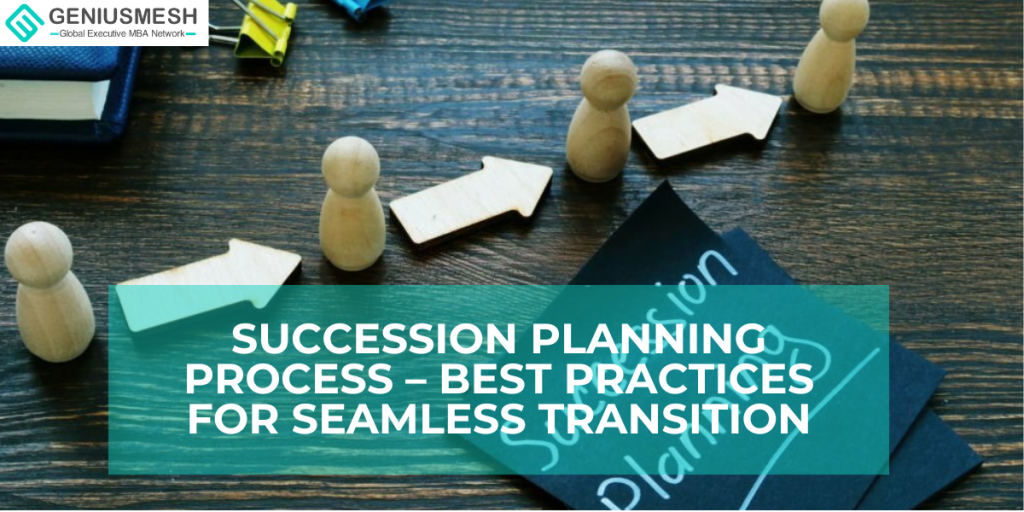Imagine a successful company suddenly losing its CEO without warning. The sudden departure leaves the organization floundering, struggling to find direction and leadership.
This scenario highlights the critical importance of executive succession planning—a process vital for ensuring seamless transitions in leadership roles within an organization.
Executive succession planning involves identifying and developing potential candidates to step into key leadership positions, safeguarding the company’s stability and continuity in times of unexpected change. We’ve got five top strategies for developing a streamlined, strong succession plan to ensure the stability and prosperity of your company.
Succession Strategy #1: Adopt a Proactive Approach
Succession planning is often seen as a daunting task for many organizations, but it doesn’t have to be so. One key to seamless executive succession planning is to adopt a proactive approach that involves:
1. Identifying and nurturing potential leaders within the organization from an early stage. This can involve providing them with tailored development opportunities, mentoring, and exposure to different aspects of the business to round out their skills and experience.
2. Ensuring transparency and communication. Implementing a transparent communication strategy regarding succession plans can help alleviate uncertainty among employees and build trust within the organization. By being open about the criteria for selecting successors and offering support to those aspiring to climb the corporate ladder, companies can foster an environment of collaboration and motivation.
Succession Strategy #2: Nurture Future Leaders
As we just mentioned, for a prosperous and profitable succession plan, identifying and nurturing potential leaders within the organization from an early stage is vital for long-term success. Identifying and nurturing key executives fosters a culture of growth and development within an organization, allowing employees to see a clear path to leadership roles and encourage them to invest in their professional development. But, how do you nurture future leaders effectively?
1. Create mentorship programs that pair emerging leaders with seasoned executives. This not only provides valuable guidance and support but also ensures that institutional knowledge and values are passed down to the next generation of leaders.
2. Be proactive in assessments of your current leadership pipeline. Identify skill gaps and implement targeted training programs to prepare high-potential employees for future leadership roles.
3. Embrace diversity in leadership succession planning. By ensuring diversity inclusion, you can bring fresh perspectives and innovative thinking into the organization’s upper echelons, enabling your organization to adapt more effectively to evolving business landscapes.
4. Cultivate an internal talent pipeline. Identifying and grooming high-potential employees for future executive roles ensures a smooth transition and helps in retaining top talent within the organization.
5. Create a comprehensive development plan for potential successors. Focus on honing identified executives’ leadership and decision-making skills. Providing targeted training and mentoring opportunities can better prepare them for taking on key leadership positions in the future.
6. Leveraging technology to identify potential candidates through data-driven assessments. Utilizing a data-driven assessment tool can provide valuable insights into individuals’ skill sets, competencies, and readiness for assuming higher-level responsibilities. By embracing innovative tools, companies can make more informed decisions about executive succession while staying ahead in the competitive market landscape.
Succession Strategy #3: Ensure Organizational Continuity
Succession planning is crucial for organizational continuity, ensuring that key positions are seamlessly filled when vacancies arise. It’s not just about identifying and grooming potential leaders within the organization; it’s also about ensuring organizational continuity. How can you best achieve organizational continuity when developing a succession plan?
1. Cultivate a culture of continuous learning and development. By encouraging employees to acquire new skills and knowledge, organizations can build a pool of competent leaders who are ready to step up when needed.
2. Align your succession plan with the organization’s strategic goals. When developing your succession strategy, it’s vital to take the future needs of the business into account. This means identifying not only leadership roles, but also critical technical and functional positions that are essential for sustained operations. A comprehensive approach to succession planning involves considering diverse perspectives and backgrounds, ensuring that the talent pipeline reflects the evolving demographics of both the workplace and customer base.
Ultimately, effective succession planning goes beyond filling positions, it’s about nurturing a dynamic workforce that can adapt to change and drive organizational success in an ever-changing business landscape.
Succession Strategy #4: Balance Tradition with Innovation
Executive succession within organizations presents a unique challenge in balancing tradition with innovation. While traditional approaches emphasize continuity and stability, innovation is essential for adapting to changing market dynamics and maintaining competitiveness. Striking the right balance requires careful consideration of both past successes and future opportunities, as well as the identification and development of leaders who can navigate this delicate equilibrium.
How can you achieve balance between tradition and innovation with your succession plan?
1. Leveraging traditional leadership values while embracing innovative practices that align with evolving business needs. This approach acknowledges the importance of respect for established norms while fostering a culture of adaptability and forward-thinking. By integrating traditional wisdom with fresh perspectives, organizations can create a seamless transition that respects heritage yet propels progress, ultimately leading to sustainable success.
2. Upholding core values while challenging the status quo in pursuit of growth. Embracing innovation does not mean discarding tradition. Rather, it empowers companies to honor their legacy while charting new paths forward. As companies navigate this delicate dance between tradition and innovation in executive succession, they can cultivate a dynamic environment where inherited wisdom coexists harmoniously with groundbreaking creativity—an approach that paves the way for enduring achievements.
Succession Strategy #5: Cultivate a Culture of Smooth Leadership Handovers
Smooth leadership handovers are crucial for the long-term success of any organization. Executive succession planning plays a key role in cultivating a culture where leadership transitions are seamless and effective. It involves identifying and developing potential leaders within the organization, ensuring that there is a pipeline of qualified individuals ready to step into leadership roles when needed.
How can you effectively cultivate a culture of smooth leadership handovers?
1. Foster open communication and transparency throughout the organization. This allows for a smoother transition as incoming leaders have a more comprehensive understanding of the challenges and opportunities they will face.
2. Offer mentoring programs to help develop & prepare future leaders. Providing future leaders with valuable insights and experiences will prepare them for their eventual transition into leadership roles.
By actively invest in executive succession planning and create an environment that supports smooth leadership handovers, organizations can ensure continuity and stability even during times of change. This proactive approach not only minimizes disruptions but also fosters an ongoing sense of confidence and trust within the team, ultimately contributing to sustained success.
Succession Planning Strategies to Optimize Your Organization’s Success: Conclusions
Effective leadership transitions and succession planning are crucial for the long-term success of any organization. While there are many tips to optimize your organization’s succession planning strategy, here are our top 5:
- Adopt a Proactive Approach
- Nurture Future Leaders
- Ensure Organizational Continuity
- Balance Tradition with Innovation
- Cultivate a Culture of Smooth Leadership Handovers
Are there any that you think we’re missing? Have you optimized your organization’s success through succession planning? We’d love to hear about your experiences in the comments.

The GeniusMesh team is a group of experts who are pioneers in executive hiring, unparalleled expertise in identifying and securing top-tier leadership talent. We have people from the top 30 Business schools across the globe who write thought-provoking content on Private Equity, Healthcare, Supply chain, Manufacturing, Technology, Finance, Venture Capital & other niches.
GeniusMesh is a pre-vetted network of 12k+ Executive MBAs who have over 16 years of operational & functional experience.



